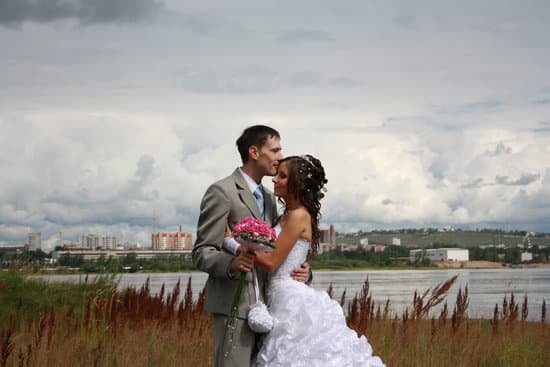Are you considering making your own wedding ring? Perhaps you want a custom design that reflects your unique love story or maybe you simply enjoy crafting and creating your own jewelry.
In this article, we will explore the process of making a wedding ring from start to finish. From choosing the right materials and designing the perfect ring to understanding the casting process and adding personal touches, we will guide you through the steps of creating your own one-of-a-kind piece.
The wedding ring holds significant meaning as a symbol of everlasting love and commitment. Traditionally, couples go through the process of buying their rings from a jewelry store, selecting from pre-made designs. But with the rise in popularity of personalized and handmade items, many are now opting to create their own wedding rings as a way to add an extra layer of sentiment and uniqueness to this cherished piece of jewelry.
In this section, we will delve into the significance of a wedding ring and examine the traditional process of buying one. We believe that by understanding these foundational aspects, it will provide context for exploring the journey of making your own wedding ring – whether with the help of a professional jeweler or by taking on the DIY approach at home.
So if you’re ready to embark on a meaningful and creative endeavor, let’s dive into the world of crafting your very own wedding ring.
Choosing the Right Materials for Your Wedding Ring
When making a wedding ring, one of the most important decisions to make is choosing the right materials. Traditionally, wedding rings are made from precious metals such as gold, silver, or platinum. However, alternative materials have become increasingly popular for those looking for something unique and non-traditional.
Gold is a classic choice for wedding rings and comes in various colors including yellow, white, and rose gold. It is a durable material that symbolizes love and eternity. Silver is another popular option known for its affordability and timeless look. Platinum, on the other hand, is a dense and durable metal that is naturally white and does not require rhodium plating like white gold.
In addition to traditional metals, there are alternative materials that can be used to make wedding rings such as titanium, tungsten carbide, stainless steel, or even wood. These materials offer unique aesthetics and can be more affordable than traditional options. When choosing the material for your wedding ring, consider factors such as durability, color preference, budget, and lifestyle to ensure that you select the best option for your needs.
| Material | Characteristics |
|---|---|
| Gold | Durable; available in various colors |
| Silver | Affordable; timeless look |
| Platinum | Dense; naturally white; durable |
Designing Your Wedding Ring
When it comes to designing your own wedding ring, you have the option to work with a jeweler to create a custom design that perfectly reflects your style and personality. Alternatively, you can choose from pre-made designs that the jeweler may have available.
If you decide to go the custom route, it’s important to find a reputable and experienced jeweler who can bring your vision to life. You will work closely with the jeweler to discuss your ideas, preferences, and budget. They will then use their expertise to draft sketches or digital renderings for you to review and approve before moving forward with the production process.
On the other hand, if you opt for a pre-made design, the jeweler may have a catalog of styles for you to choose from. This can be a convenient and cost-effective option for those who are not looking for something completely unique. It’s important to explore all available options and carefully consider what will best suit your needs and desires.
Whether you choose a custom design or select from pre-made options, working with a skilled jeweler can ensure that you end up with a wedding ring that is both beautiful and meaningful.
In order to make your own wedding ring in collaboration with a jeweler, consider taking these steps:
- Research potential jewelers in your area
- Schedule consultations with different jewelers
- Budget for the cost of creating a custom design
- Communicate openly and honestly about your preferences
- Be open to expert advice and suggestions from the jeweler
By following these steps, you can have confidence in making informed decisions about designing your wedding ring while enjoying the guidance of an experienced professional.
The Process of Casting the Ring
Turning your design for a wedding ring into a physical piece involves the process of casting. This is the step where the actual creation of the ring takes place, bringing your vision to life. The first step in casting is creating a mold for the ring, which can be done using various methods such as lost-wax casting or 3D printing.
Once the mold is prepared, the next step is to melt down the chosen metal – whether it’s gold, silver, platinum, or another alternative material – and pour it into the mold. This requires precision and expertise to ensure that the metal fills the mold completely and evenly. After allowing the metal to cool and solidify, the mold is broken or dissolved away, revealing the raw form of your wedding ring.
Following this, further shaping and refining may be necessary to achieve the desired look and fit. Any imperfections or excess metal are carefully removed by skilled artisans before moving on to setting any gemstones if they are part of your design.
Understanding each step involved in casting a wedding ring gives you insight into the craftsmanship and artistry required to create this symbolic piece of jewelry. Whether you choose to work with a jeweler or attempt making your own wedding ring at home, knowing about this process allows you to appreciate the intricate work that goes into every handcrafted piece.
Now that you understand how casting plays an essential role in turning your design into a physical wedding ring, you can move forward with confidence in creating or selecting a special symbol of love and commitment that will last a lifetime.
Setting the Stones
When designing a wedding ring, incorporating gemstones can add a touch of elegance and personalization. The first step in setting gemstones in your ring is to select the right ones. Consider the significance and symbolism of certain stones, such as diamonds for their durability and eternal quality, or birthstones that hold personal meaning. Once you have chosen the gemstones, it’s important to ensure they are of high quality, with no visible flaws or imperfections.
After selecting the gemstones for your wedding ring, the next step is to decide on the setting style. Popular options include prong settings, which hold the stone in place with metal claws, bezel settings that surround the stone with a metal band, or channel settings where stones are held between two metal walls. The setting style will impact both the appearance and security of the gemstones in your ring.
When it comes to actually setting the gemstones in your wedding ring, it’s advisable to seek professional help from a skilled jeweler. They have specialized tools and expertise to ensure that each stone is securely and accurately set. However, for those interested in a DIY approach, there are kits available that provide the necessary tools and instructions for safely setting gemstones at home.
| Popular Gemstone Options | Setting Styles |
|---|---|
| Diamonds | Prong Settings |
| Sapphires | Bezel Settings |
| Rubies | Channel Settings |
Now that we have covered how to select and set gemstones in your wedding ring, let’s move on to exploring the finishing touches that will truly personalize your handmade piece of jewelry.
Finishing Touches
Once the metal has been cast and the stones have been set, it’s time to add the finishing touches to your wedding ring. This is where you can truly make your ring unique and personalized to you and your partner. From polishing the metal to engraving a special message, these final steps will ensure that your ring is truly one-of-a-kind.
Polishing
After the rough casting process, the metal of the ring will need to be polished to remove any rough edges and create a smooth, shiny finish. This can be done using specialized polishing equipment and techniques that jewelry professionals have perfected over time. The goal is to make the metal shine and look its best, creating a stunning final product.
Engraving
Engraving a special message or date inside the band of the ring is a popular way to personalize it. Whether it’s your initials, a meaningful quote, or your wedding date, engraving adds a sentimental touch to your ring. There are various fonts and styles to choose from when it comes to engraving, so discuss with your jeweler on how best to incorporate this personalization into your design.
Personalizing Your Wedding Ring
Beyond polishing and engraving, there are numerous other ways to personalize your wedding ring. From incorporating different textures or finishes on the metal band to adding small details like filigree or milgrain, there are endless options for making your ring truly unique. You can also consider adding colored gemstones or mixing different metals for a distinctive look that reflects your personal style.
Overall, these finishing touches are what truly make a wedding ring stand out as a one-of-a-kind piece of jewelry. By taking care of these details thoughtfully, you will end up with a bespoke masterpiece that symbolizes love and commitment like no other. In conclusion.
DIY Options
When it comes to the idea of making your own wedding ring, many people may initially feel intimidated by the thought of taking on such a task. However, with the right guidance and resources, creating your own wedding ring at home is not only possible but can also be a deeply meaningful and fulfilling experience.
Gathering Materials and Tools
The first step in making your own wedding ring is to gather the necessary materials and tools. This includes obtaining the metal of your choice, such as gold, silver, or platinum, as well as any gemstones if desired. Additionally, you will need basic jewelry-making tools like a jeweler’s saw, files, pliers, and a torch for soldering. It’s important to invest in high-quality materials and tools to ensure the durability and quality of your finished ring.
Learning the Techniques
Before embarking on the actual process of making your wedding ring, it’s essential to understand the techniques involved in jewelry making. There are numerous online tutorials, classes, and workshops available that can teach you how to shape metal, solder pieces together, set stones securely, and polish your finished ring. By familiarizing yourself with these techniques beforehand, you will feel more confident and prepared to tackle each step of the process.
Taking Your Time and Seeking Support
Making a wedding ring at home is not a project that should be rushed. It requires patience, precision, and attention to detail. It may also be helpful to seek support from experienced jewelers or artisans who can offer guidance or advice along the way. Don’t hesitate to reach out to local jewelry studios or online communities for assistance if you encounter any challenges during the creation of your wedding ring.
By Embracing DIY Options for Making Your Own Wedding Ring at Home
you have entered an exciting world where creativity meets craftsmanship. You have full control over every aspect of its creation – from selecting the materials to crafting its design – resulting in a truly unique symbol of love and commitment that holds deep personal meaning.
Final Thoughts
Making your own wedding ring can be an incredibly meaningful and satisfying experience. By creating your own piece of jewelry, you are not only adding personal value to the ring, but also ensuring that it is truly unique and one-of-a-kind. This section will explore the significance of a handmade wedding ring and the satisfaction that comes from the process of creating it.
Personal Significance
A handmade wedding ring holds deep personal significance and sentimental value. It becomes more than just a piece of jewelry; it becomes a representation of your love and commitment to your partner. Knowing that you have put in the effort and time to create something so special adds an extra layer of emotional connection to the ring.
Unique and Customized
When you make your own wedding ring, you have complete control over the design and details. You can customize every aspect, from the materials used to the overall style. This level of customization ensures that your ring is truly unique and tailored to your preferences. Whether it’s incorporating specific elements that hold meaning for you and your partner or simply designing a one-of-a-kind piece, a handmade wedding ring stands out as a symbol of individuality.
Satisfaction of Creating
The process of making your own wedding ring can be incredibly fulfilling. From choosing the materials to crafting the design and seeing the finished product, there is a sense of achievement in creating something with your own hands. The satisfaction that comes from knowing that you have contributed to every step of the process is unmatched. It’s not just about the end result, but also about the journey of creation itself.
Conclusion
In conclusion, the process of making your own wedding ring can be incredibly rewarding and meaningful. From choosing the materials and designing the ring to casting, setting stones, and adding finishing touches, each step allows for personalization and customization that simply cannot be achieved through purchasing a mass-produced ring. The satisfaction that comes from wearing a wedding ring that you have made yourself is truly unparalleled.
The significance of a handmade wedding ring goes beyond just the creation process. It represents the time, effort, and love put into crafting a symbol of commitment and love. The sentimental value of knowing that you or your partner had a direct hand in creating such an important piece of jewelry adds even more depth to what the ring represents.
While making your own wedding ring may not be for everyone, for those who are inclined towards a hands-on approach and are looking for a unique and personal experience, it can certainly be a fulfilling endeavor. Whether you choose to work with a professional jeweler or explore DIY options at home, creating your own wedding ring can result in a deeply meaningful and cherished possession that will last a lifetime.
So, if you’re considering how to make a wedding ring, don’t overlook the option of putting your creativity and effort into crafting this special piece of jewelry.

I have been involved in marriages for over 20 years helping couples and singles understand more about them.





